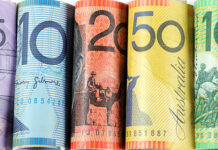Market movers today
The development in US-Chinese trade tension remains in focus after US President Trump announced another USD200bn worth of tariffs last night.
In Scandi, Swedish August LFS is due to be released. So far, Swedish labour market developments have been very impressive, albeit it is a lagging indicator.
The Bank of Japan meets today and is scheduled to announce its monetary policy on Wednesday morning European time. We expect the BoJ to keep its policy unchanged and for Governor Haruhiko Kuroda to reiterate a relatively dovish stance, signalling that the BoJ intends to keep interest rates at current levels for a longer period of time. We expect the BoJ to keep its current policy intact until the end of 2019 at least.
Selected market news
Last night, the Trump administration announced a new 10% tariff on USD200bn worth of Chinese products. A 10% tariff is less than previously feared, but at the same time, President Trump threatened to increase the tariff to 25% in 2019 unless a deal is reached to ease trade tensions. The total value of imported goods from China covered by Trump’s tariffs is now USD250bn or roughly 50% of total US imports from China. China has promised to retaliate to any US measures against China one-to-one and with the new tariffs from the US side, it is difficult not to see the trade war escalate further – also in light of the US mid-term elections. In our view, a deal seems unlikely before well into 2019. The risk is that it drags on. At least, China seems to be preparing itself for a long-lasting trade war by (among other things) easing economic policy. See US-China Trade Update – China unlikely to give in to Trump’s demands despite new tariffs , 17 September.
Global equity markets trade mixed this morning: Hong Kong and Chinese markets trade lower while Japanese indices are up more than 1.5% as Japanese investors return from holiday. The strong rally in Japanese markets probably reflects that a 10% tariff is less than initially feared.
The Riksbank Minutes released yesterday basically confirmed the signal to hike in either December or February. We read them as slightly hawkish, where the doves are now taking a more neutral stance. The question is how the Riksbank will assess the lower-than-expected inflation and GDP data. We stick to our base case with a hike in December though.
Minutes from the 4 September monetary policy meeting in the Reserve Bank of Australia confirmed that the next move in interest rates is likely to be a hike. However, while the RBA expects GDP growth likely to remain ‘above potential’, it also warned that ‘significant tensions’ around trade policy are a ‘material risk’ to the global outlook. We expect the RBA to hike the cash rate by 25bp within the next 12 months.











